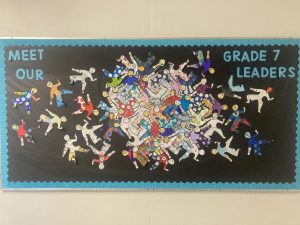Ms. Pontalti will be away tomorrow, so band will be cancelled until next week. You do not need to bring your instruments to school tomorrow.
Thanks!
-Ms. Ward
A collection of moments from our Grade 7 learning community
Ms. Pontalti will be away tomorrow, so band will be cancelled until next week. You do not need to bring your instruments to school tomorrow.
Thanks!
-Ms. Ward
Hi Grade 7s! Please don’t forget:
-bring in your Emergency Comfort Kits as soon as possible! Your parent/guardian has received an e-mail with more details
-please get your yellow permission form from Ms. Ramen signed and returned. We will be starting our sculptures on November 9th!
-Math comic strips are now extremely overdue!
Enjoy your weekend!
-Ms. Ward
Be careful what you wish for! Our class completed our first read-aloud, the horror novel The Nest by Kenneth Oppel. In this story, a boy named Steven makes a wish to heal his baby brother’s illness. However, his wish costs him much more than he anticipated when he realizes the ‘angels’ he has been talking to are really a hive of supernatural wasps!

We thought this novel had many twists, turns, and suspenseful moments. The dark, creepy illustrations added to the experience. While some of us weren’t entirely satisfied with the ending, this was a great first read-aloud to kick off our school year!
In 2020, the authour Kenneth Oppel shared that The Nest could potentially be made into a film one day! Here is a sketch of the concept art:

Some questions to discuss at home:

Have you ever performed a dissection? We learned that dissections were (and are) a tool that scientists use to learn more about the biology and anatomy of plants, animals, and even people. We performed a ‘mock’ dissection using Twinkies! Our students needed to practice their precision, observation, and patience when taking samples, making incisions, and removing ‘organs’ (filling) from their ‘test subjects’.
Our analysis of Cartoon Network’s mini-series Over the Garden Wall has come to an end! Throughout this month, we have been exploring: important characters, clues and symbols, changes in settings, and key plot events. We also began analyzing the musical soundtrack for different tones, themes, and lyrics. Now, our classes are crafting our own theories about some unanswered questions within the show!


Our Grade 7s put their baking skills into practice this week by creating mini pumpkin pies! Students had to read through the recipe, measure accurately, work collaboratively, and clean-up afterwards. We learned about the origins of pumpkin spice (which usually includes a mix of cinnamon, nutmeg, cloves, ginger, and allspice). For some of us, this was our first time trying this seasonal dessert! If you want to make the recipe at home, click the link below:
Hey, Grade 7s! Don’t forget to practice the first 1:30 of this song to get ready for our performance on October 31st!

Each of our Grade 7s made a ‘piece’ of this collaborative art!

What skills does it take to make the perfect chocolate chip cookies? How is baking similar to science? Why is it important to read recipes thoroughly? We began learning about key baking skills this week! Our Grade 7s went through ‘Baking Bootcamp’, where we learned about: when and how to wash our hands, how to keep our materials and workspace sanitary, why accuracy is important, how to use a funnel, how to stir effectively, and how to measure dry and wet ingredients.

While baking may seem like a stress-free activity, it requires many different skills such as: reading comprehension, math (measurement, conversion), cooperation and communication, etc. It also requires a lot of scientific knowledge to make a successful baked good! Feel free to watch the video below to learn how some common mistakes can impact the success of a cookie recipe, and stay tuned for more updates!

As part of our ‘Spooky Science’, our class investigated a mysterious substance. Not quite liquid, not quite solid, but a little of both… this is a non-Newtonian fluid! You can make this substance at home by mixing a 2:1 ratio of cornstarch to water. Once mixed well, this substance can behave like a solid and like a liquid!
We tested this substance in a variety of ways, including: slapping/poking the surface, sinking a spoon into it, rolling it into a ball, and trying to pour it into another container. We learned that when we kept the substance still (ex: holding it in our hands without moving), it often would pour or drip like a liquid. But if the substance was being moved (ex: rolling it between our hands), it would take on a more solid appearance.
Check out the video below to see how this substance behaves when placed on top of a speaker cone:
Some questions to discuss at home: